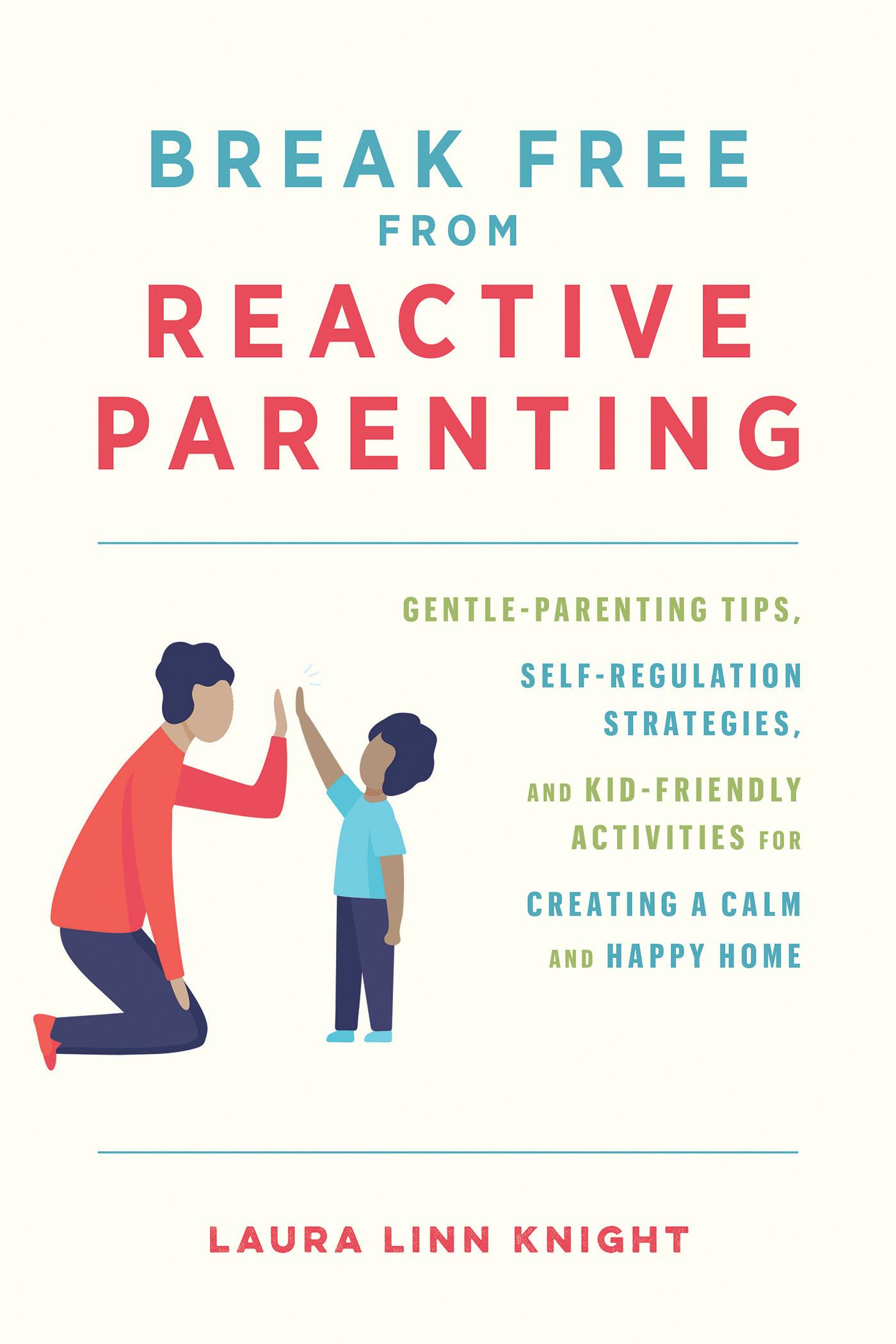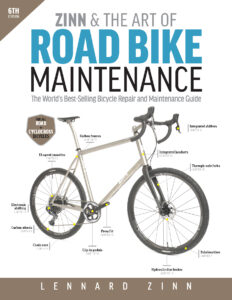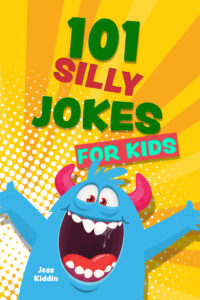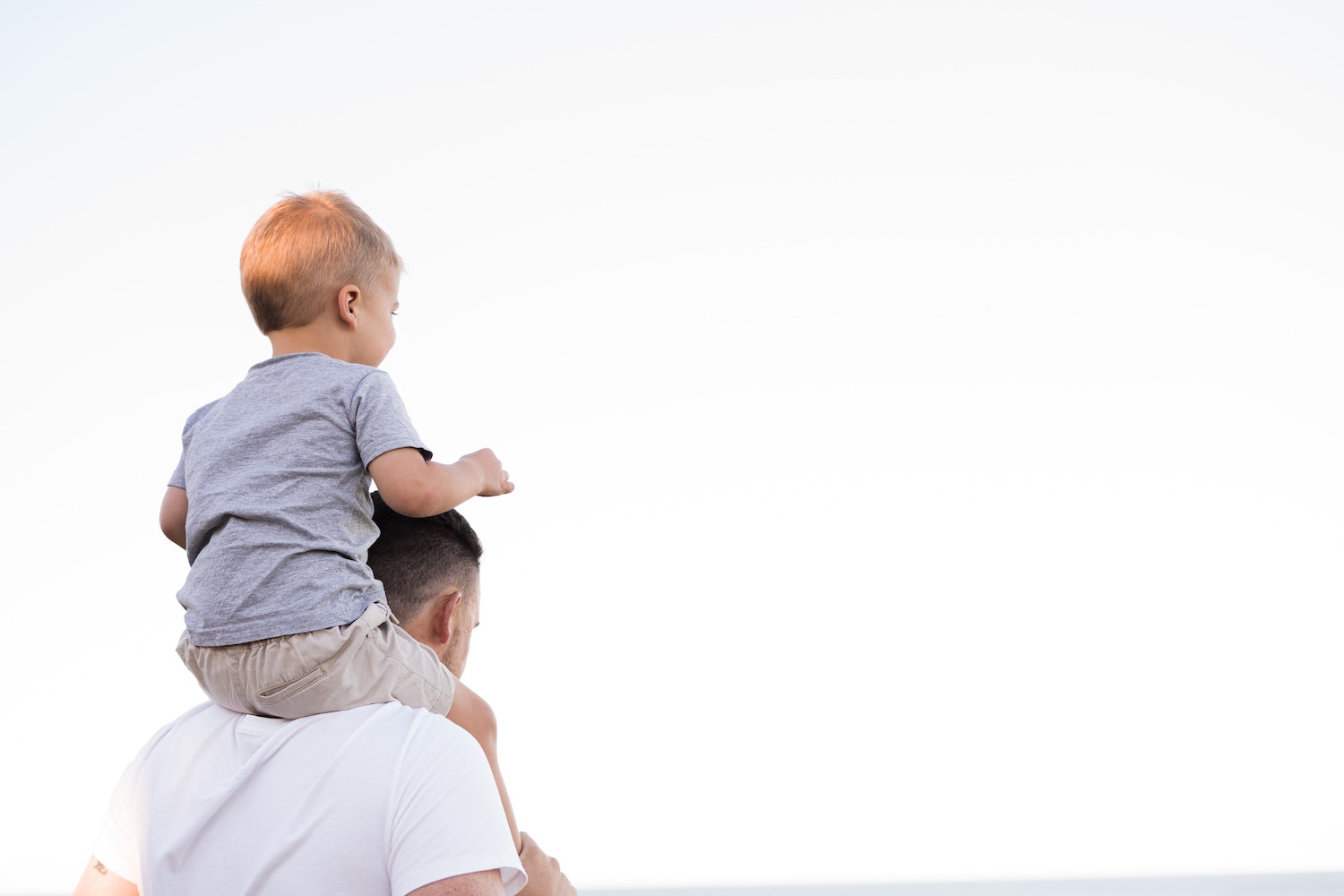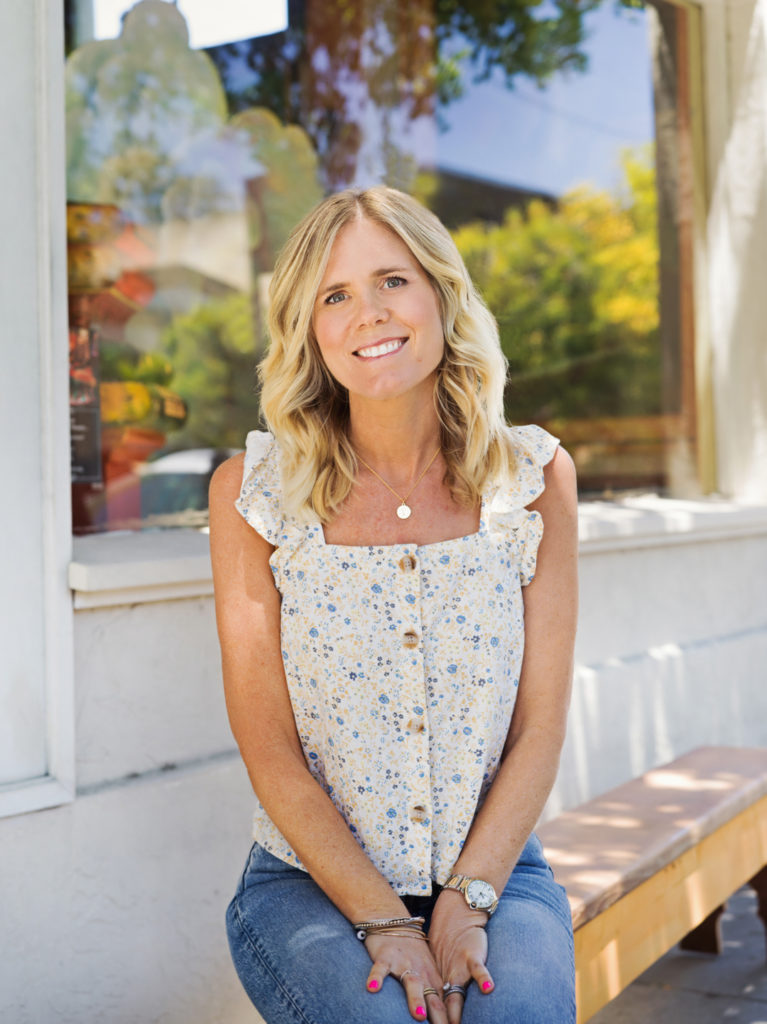
What Is Non-Reactive Parenting? Make Parenting Less Stressful with This Method
- Education /
- Self-Help
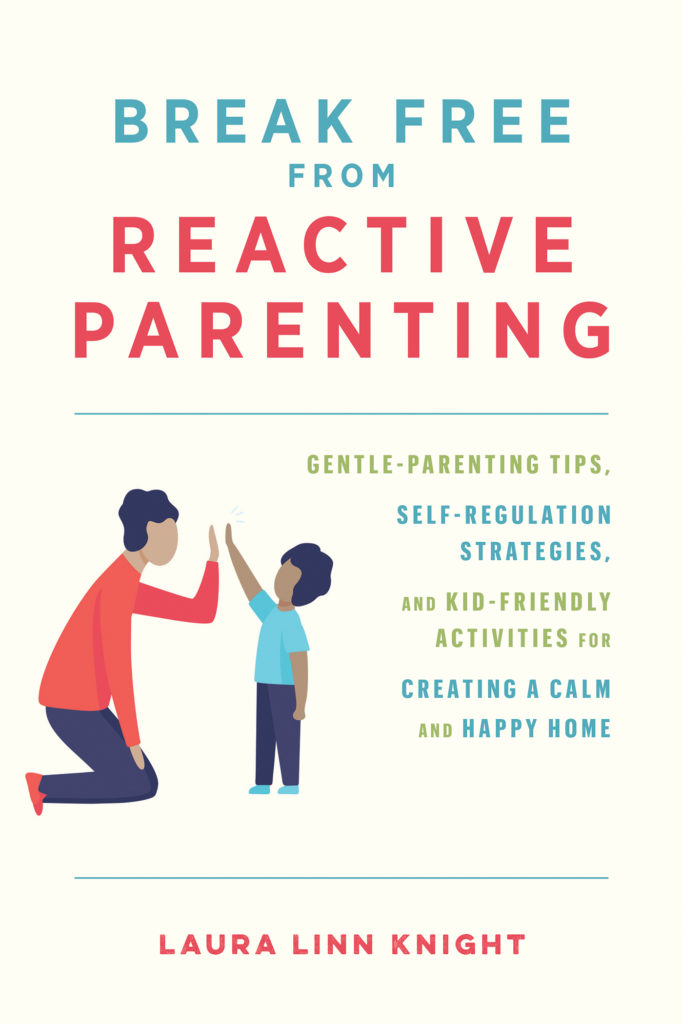 If you’ve ever been curious about “gentle parenting” or wondered “what is non-reactive parenting, exactly?” then this post is for you! Parenting educator and author Laura Linn Knight breaks down for us what reactive parenting really is, and how we can break the cycle to become more mindful, non-reactive, and gentle parents who create happier, calmer homes! Read on for Laura’s story and tips, then check out Laura’s brand-new book, Break Free from Reactive Parenting, available wherever books are sold!
If you’ve ever been curious about “gentle parenting” or wondered “what is non-reactive parenting, exactly?” then this post is for you! Parenting educator and author Laura Linn Knight breaks down for us what reactive parenting really is, and how we can break the cycle to become more mindful, non-reactive, and gentle parents who create happier, calmer homes! Read on for Laura’s story and tips, then check out Laura’s brand-new book, Break Free from Reactive Parenting, available wherever books are sold!
* * *
Parenting is quite a journey where we’re always learning, always growing, and–for many of us–always feeling frustrated and exhausted.
The temper tantrums. The power struggles. The emotional rollercoasters.
The everyday experiences we have with our children can cause us to feel like things are just out of our control, and we end up burdening ourselves with parenting guilt and shame, unnecessary exhaustion, and a pile of parenting problems we don’t know how to solve.
What I have observed from other parents (and experienced myself) is that we tend to rely on one of three common parenting styles when we’re unsure about what to do: authoritarian parenting, permissive/passive parenting, or reactive parenting. Let’s break down these parenting approaches:
1. Authoritarian parenting: “If you live under my roof, you will do as I say.”
This parenting style is rooted in more controlling actions (even threats), which can cause children to feel shame or guilt for acting a certain way or expressing their emotions.
2. Permissive/passive parenting: “It’s just a phase. My child will get over it.”
This parenting style focuses on “brushing off” a child’s behavior or ignoring it. A popular parenting myth is, if a parent addresses their child’s behavior, it can get worse, or the parent is enabling it. But that’s not true at all, and permissive parenting creates a home environment without healthy boundaries. Parents who choose this parenting approach tend to give their child whatever they want to appease them and stop their emotional upsets.
3. Reactive parenting: “I told you to STOP doing that! No MORE playtime!”
This parenting style relies on emotionally reacting to your child’s behaviors. Reactive parenting can lead to yelling, hitting, threatening, begging or overly bribing. We don’t want our child to be act out anymore, so we can rely on autopilot methods. Sometimes, our reactive parenting ways can actually stem from our own childhood and how we were raised!
Much of my work as a parenting educator is focused on helping parents step away from these parenting styles–especially reactive parenting–and become more mindful of how they’re handling their child’s behaviors. We can make parenting far less stressful when we take a moment to pause and observe what’s going on in our home. We can build better, healthier, and stronger relationships with our children if we establish routines in place to help during times of high emotions.
Laura’s Story: How I Stopped the Cycle of Reactive Parenting
My journey to becoming a parenting educator started when my son (at the time, 3 years old) hit me. At first, I was shocked and told him to not do that to me. Questions ran through my head after he showed this type of behavior: Why did my sweet child hit me? What could be going on that caused him to do this?
As time went on, my son started also talking back and having bigger melt downs. I was at a complete loss on what to do. I tried authoritarian parenting. I tried brushing it aside and ignoring him.
But when I stepped into reactive parenting, I yelled at him to stop hitting me, and he looked up at me with his sweet, sad eyes and started to cry. I felt so, so bad and the mommy guilt was hitting me hard.
Listen to my story in detail with my FREE audio training.
I knew something had to change. Yelling was not how I wanted to parent.
I went in search of different methods for parenting. I became certified in Positive Discipline, but I also developed my own parenting tools that I believe were extremely helpful and effective, especially in times of high stress for me and my family (like the time my young daughter was diagnosed with mold toxicity).
Not only did my bond with my children improve significantly, but my marriage, my friendships, and my relationship with myself blossomed and thrived. It’s a wonder how, when we create calm within ourselves, calm permeates throughout every part of our lives!
I hope to share these tools and tips with you in this post and share what I have learned by finally breaking the cycle of reactive parenting once and for all.
What Is Non-Reactive Parenting?
I know that some parents may mistake “non-reactive parenting” as permissive or passive parenting, but that’s not the case at all! Non-reactive parenting means that you choose to be conscious of the way you parent. You step back from a situation (e.g., your child is having a temper tantrum), understand what’s going on, and handle the problem with a calmer, more loving approach. You don’t have to rely on yelling at your child when they’re having a moment of emotional stress!
When YOU, the parent, are calm, then you can help your child enter into a state of calm and joy, too. We must remember that temper tantrums, emotional upsets, power struggles, and everything in between are just moments. These events may happen often when we don’t know how to self-regulate or help our child regulate their emotions.
If you feel like your home is completely out of order or you don’t know what to do when it comes to your child’s behavior, let me help you and your family with several of my favorite and most effective parenting tips (plus, I have FREE parenting tools to share with you, too!):
My Top 5 Tips to Break Free from Reactive Parenting
1. Think beyond your child’s behavior
When your child is having a meltdown, instead of reacting or engaging in a power struggle, take a moment to think beyond what they’re experiencing. You don’t have to feel like you’re pulling teeth! This is where “choosing your battles” will come into play. Let me give you an example on how to go beyond the behavior:
One evening, my daughter was exhausted, but was having a meltdown and didn’t want to go to bed. I was tired myself and, frankly, I was not in the mood to use my tools (yes, this happens to me at times, too!).
Despite my initial feelings of annoyance bubbling up, I decided to use a parenting tool from my parenting toolkit and avoided getting upset. I went beyond my daughter’s meltdown and looked at the situation from a different angle. Here’s what I did:
Step 1: I acknowledged my daughter’s exhaustion: “I see you are really tired right now. I know just how you feel because I’m really tired, too.”
Step 2: I took her into my arms and told her 10 things I adored about her. She melted into me, had a big cry, and felt my love. This exercise helped us both get into a state of love and calm, rather than exhaustion and annoyance.
Step 3: I told my daughter kindly (but with a boundary) that it was time for bed. She crawled right under her pink blanket willingly, after feeling like she was seen and heard.
Most of the time, when a child is experiencing those big feelings, it’s really a moment for us parents to soothe and comfort – not react. You will find that, when you choose to not react and approach the situation calmly and compassionately, your child will be much more cooperative.
Next time you’re having a power struggle with your child, I invite you to pause and see if you can see beyond the behavior to see what your child truly needs in that moment.
2. Incorporate somatic exercises into your daily routine with your child
Somatic exercises, or body movements, are wonderful and effective ways to get you and your child out of a stressful situation. Many times, we just need to step out of the situation momentarily, calm ourselves, and come back to the problem with a clearer, calmer mind. I personally do somatic exercises with my children all the time, and my #1 FREE parenting tool, the Calming Cards for kids and parents, is based on mind-body techniques!
For most parenting problems, we don’t have to necessarily address the issue right away. We can simply pause, do a fun mind-body exercise with our child, and come back to the problem and discuss a solution. Like I mentioned before, children are more likely to cooperate when fun and calm are involved!
Some examples of somatic exercises you can do with your child include:
- Breathing exercises – try this Pumpkin Breaths handout I created!
- Going on a short mindful walk and playing “I Spy”
- Doing yoga stretches together
- Playing a clapping game
By removing both you and your child from a situation or emotion, you make the effort to reconnect with your child. You don’t have to jump right into the behavioral issue (or other problem). You can always follow-up on the behavior later and address it calmly and kindly (with boundaries, of course).
3. Create a plan to PAUSE with your child
One of the most practical ways for you to break the cycle of reactive parenting is to create a plan to do so! With my FREE Plan to Pause Poster (downloadable & printable) for both parents and kids, you and your child can come up with a plan to pause when things get a little overwhelming at home. You can also create your own poster if you wish!
To create a non-reactive parenting plan, what you want to do is list 3-7 activities that you personally like to do to relax and feel calmer. For example, on my list, I have these activities listed:
1. Go in the other room and take deep breaths.
2. Turn on my favorite song.
3. Go on a walk around my house or in my backyard.
4. Smell a flower, a piece of fruit, or an essential oil.
5. Play the game rock, paper, scissors with my child.
6. Lay on the floor and put a stuffed animal on my belly. Watch the stuffed animal go up and down with my breath.
Whenever there’s a potential power struggle or I need a moment to collect myself to avoid reacting, I go to my Plan to Pause Poster and choose an exercise to do in that moment to help me get out of my mind and emotions. You can do the Plan to Pause Poster activity with your child, and they can come up with their own list of what to do when they feel angry, sad, or upset. Have the poster in a place where you will see it daily so that you’re reminded often to PAUSE!
4. Practice gratitude together with your child
Gratitude is one of my favorite ways to bring more love, joy, and peace into the home.
Sometimes, the way we view our partner, or our children can affect how we respond to them – whether negatively or positively.
At one point in my marriage, I was starting to feel more annoyed with my husband. I realized that this was causing me to feel not-so-calm within myself, so I sat down and created a gratitude list where I wrote down 10 things I loved about my husband.
I loved the times when he would let our daughter sleep on his chest for hours.
I loved when he would make funny jokes at dinner and make the entire family laugh.
I did this exercise daily to help remove myself from those feelings of annoyance and started to focus on what was amazing about my husband. We can completely forget the beautiful things in our life when we immerse ourselves in negative thoughts or emotions!
And wouldn’t it be great if we can teach our children gratitude, too?
Talk to your child about gratitude and why it’s important. At dinner time, you can ask them what one thing is they are grateful for that day. You can create a habit of gratitude for your children early, and they will have that tool with them for life.
You can use the printable Gratitude Flower or download and print my FREE kids’ gratitude journal to use together with your child.
5. Know how your brain works
“Really, Laura? This is your tip?”
Hear me out! Understanding our brain can help you know the why behind your reactions and your child’s behaviors.
To keep it simple here, there are two major parts of your brain that can contribute to the way you respond or react: the amygdala and the prefrontal cortex.
The amygdala is also known as the “reptilian brain,” and it’s in charge of our fight, flight or freeze reactions. We can often use the “fight” (react to child’s behavior by yelling or other action) or “flight” (ignore and walk away from the problem) in reactive parenting.
The prefrontal cortex is where we make our rational decisions and problem solve. When you reach a breaking point emotionally and/or mentally, you no longer use this part of your brain. The amygdala (and lower brain) takes over and you end up reacting to your child’s meltdown.
When you pause and take a deep breath, you calm your reptilian brain, and you reactivate your prefrontal cortex. You might feel some aftereffects when feeling stressed or high emotions, but taking a moment to collect yourself will help you make better decisions and remember your parenting tools.
Break Free from Reactive Parenting – For Good (or at least, most of the time!)
I hope you enjoyed the calm parenting tips I shared! If you’re interested in other parenting tools I offer, my book, Break Free From Reactive Parenting, will be released on November 8th! I’m very excited to share this news with parents like you.
In my book, I dive deeper into reactive parenting and how you can finally stop the cycle – for good. Once you have the tools in place and practice them regularly, you’ll find that it’s much easier to handle your child’s temper tantrums or meltdowns. I help you rewrite unproductive, inefficient parenting patterns that create recurring problems in your home.
One of the discussion points I emphasize in the book is that, when we break away from reactive parenting, we also teach our children how to self-regulate and have tools in place when they need them most – even when they’re all grown up.
We break free from generations of reactive parenting (or authoritarian/permissive) and raise our children into a new generation where mindful and calm parenting are more common!
Thank you so much for being here with me today. I hope you found helpful parenting tips and tools to bring even a little bit of calm to your home.
Lots of love to you and your family,
Laura Linn Knight
Break Free from Reactive Parenting
Learn how to be a parent who reacts with patience and kindness instead of anger and frustration and overcome the cycle of reactive parenting. Pretty much every parent has been reactive at some point. Reactive parenting encompasses the negative behaviors that stem from frustration, like yelling, threatening, screaming, and over-rewarding or
Learn more